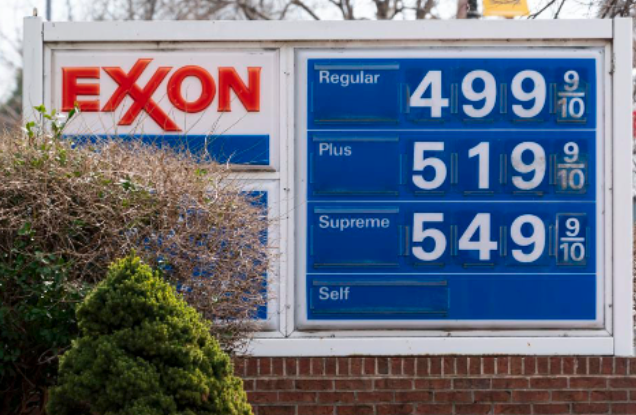Economic Changes in the Brazos Valley
The Federal Reserve increased interest rates this past March. A professor from the Department of Economics explains what this means for the Brazos Valley.

By Tiarra Drisker ‘25
On March 16, the Federal Reserve increased its benchmark rate a quarter of a point in an attempt to rein in inflation, which is higher now than it’s been in 40 years. This is the first of many small increases expected from the Federal Reserve to combat inflation.
Though the increase in interest rates seems small, its future effects may have a large impact on the Brazos Valley and the rest of the country.
The increase in interest rates affects everyone, but students experience the effects of inflation and increased interest rates in a unique way via student loans. Students may also feel this economic change more than others due to their financial vulnerability.
“The higher interest rates on these ten year treasury bills impacts new loans and they will certainly impact and increase private student loans,” Dennis Jansen, a professor in the Department of Economics, said. “The inflation rates are also affecting students. It’s affecting rent and wages. The rise in prices is increasing faster than the rise in wages, so in terms of purchasing power, wages are going up too slowly. People are getting raises, but those raises are purchasing fewer goods and services so it’s like you’re getting a pay cut.”
People may be led to believe that the Federal Reserve’s increase in interest rates is causing the rise in inflation, but economists like Jansen say that is not the whole story. Jansen also said that because of this common misconception, it is important for people to understand how the Federal Reserve works as well as the effects it may have.
“It’s important to be informed about economic policy that impacts all of us,” Jansen shared. “If you’re going to complain about the inflation rate, you might at least want to know or have an opinion about whether the [Federal Reserve] is responding appropriately and the reasons for the actions that the federal reserve is taking.”
Jansen said the increase in the interest rate is appropriate, but more increases will need to be made in order to reach the Federal Reserve’s goals for inflation.
“It’s a very small change in the interest rate,” Jansen said. “If that was the only change, you wouldn’t notice it. That change itself matters very little. What is more impactful is that the Federal Reserve System is going to continue to raise the interest rate on reserves and has plans to do so for the foreseeable future. What we’re seeing is the [Federal Reserve] responding to the very high inflation rates by gradually increasing the interest rate on reserves in small increments but planning on doing so for the foreseeable future. The interest rate on reserves could be several percent by the end of the year.”
People are generally wary of inflation because it results in a rise in prices. Inflation can make it difficult to determine whether prices are reasonable. People may be unaware of how much of a price increase is caused by a relative price increase or how much of it is due to a general increase in all prices. Jansen said this is one of the reasons the Federal Reserve is increasing the interest rate.
“The [Federal Reserve] is raising interest rates on reserves because it is responding to the high inflation rates we have and to the rising interest rates that we’re already having,” Jansen said. “Interest rates have risen a fair amount since January. The Fed is raising interest rates to have an impact on the inflation rate.”
Another reason for the Federal Reserve’s rise in interest rates is that generally, interest rates have already increased. The Federal Reserve is trying to lessen the discrepancy between short term interest rates and long term interest rates within the economy. For example, the interest rates for ten year treasury bonds have increased which makes banks prefer treasury bonds over reserves.
“The interest rate on treasury bonds has gone up and it’s enticing banks to try to reduce their holdings of reserves and instead hold more treasury bonds because they pay higher interest rates,” Jansen explained. “The more that banks engage in this activity of trying to reduce their holding of reserves and instead use those reserves to buy treasury bonds, the money supply will grow and perhaps make it harder for the [Federal Reserve] to slow down the inflation rate. The [Federal Reserve] is raising the interest rate on reserves to counteract this very large rise in inflation we’ve been experiencing.”
As for the long term effects of the Federal Reserve’s increase in interest rate, there is hope for a positive outcome.
“I think there’s some hope in the administration and in the Federal Reserve that the inflation rate will slow down,” Jansen said. “It would have to slow down a lot to get back to the federal reserve’s target. The Federal Reserve’s target is a 2% inflation rate for a year. We’re incredibly far above it. Raising the interest on reserves by a quarter of a percent is a step in the right direction, but it’s an awfully small step.”
